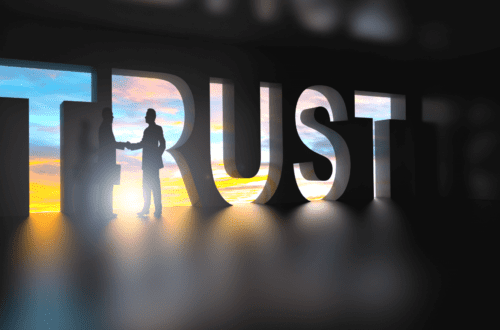Could one common habit be the reason you’re not getting better, even after time off and self-care?
You’ll learn five mistakes that slow or derail burnout recovery and clear steps to avoid them. Burnout recovery is a process that blends rest, behavioral change, structural adjustments, and emotional work. In the United States, surveys from the American Psychological Association and Gallup show persistently high workplace stress and exhaustion that hurt productivity and health. The World Health Organization also recognizes burnout as an occupational phenomenon, so this isn’t just personal — it’s widespread and worth addressing now.
This article gives practical burnout recovery tips and shows how to recover from burnout with concrete actions. You’ll see how to spot burnout symptoms and recovery signals, and how to apply workplace burnout recovery strategies and personal fixes. Expect diagnostic tools, step-by-step methods to restore energy after burnout, and resources like therapy, coaching, and occupational accommodations.
We’ll cover five mistakes: failing to recognize root causes; neglecting rest and recovery practices; rushing back to full capacity; relying solely on willpower; and ignoring emotional recovery and mental health needs. Each section includes actionable guidance and stress and burnout solutions so you can overcome burnout naturally and reclaim steady energy and focus.
Understanding Burnout Recovery and Why It Matters
Recovering from stress starts with knowing what it is and how to spot it. The World Health Organization and the American Psychological Association define burnout as long-term stress at work. Emotional burnout is feeling drained, numb, or overly reactive.
Defining burnout and emotional burnout
Burnout has three main parts: feeling exhausted, cynical, and less effective at work. Emotional burnout focuses on feeling drained and numb. Using ICD-11 and APA research helps you know when stress is harmful.
Common burnout symptoms and recovery indicators
Signs of burnout include brain fog, irritability, and physical problems like insomnia. Recovery signs are clear and measurable. Look for better sleep, more energy, and interest in activities again.
Recovering well means getting back to about 70–80% of your old self. Then, you can handle more work.
Why early recovery efforts improve long-term outcomes
Starting recovery early stops stress from becoming chronic. It helps your body and mind recover faster. Early help also means you’re more likely to go back to work without problems.
Choosing to act early makes recovery faster and reduces the chance of relapse. It helps you build resilience and face stress better.
Failing to Recognize the Root Causes of Burnout
Before you can fix a problem, you need to know what it is. Burnout looks the same for many: feeling tired, cynical, and less effective. But what causes these signs can differ.
Workplace issues like too much work, unclear roles, bad leadership, or a toxic culture can be culprits. Personal life stress, like caring for others, money worries, health problems, sleep issues, or striving for perfection, can also play a part. Often, it’s a mix of both. Focusing on the main cause speeds up recovery.
Workplace burnout recovery vs. personal life factors
Work-related causes need job-focused solutions. This includes redesigning your job, making roles clear, sharing workload, and training managers. The Americans with Disabilities Act can help with formal job changes.
Personal issues require different approaches. This might include counseling, medical care, financial planning, or support for caregivers. If you also have depression or anxiety, treatments like cognitive behavioral therapy and medication are crucial.
How stress and burnout solutions depend on diagnosis
Choosing the right solution depends on the cause. Trying every fix without knowing the cause is a common error. A proper diagnosis tells you who needs to act: you, your manager, HR, or a doctor.
For work-related burnout, aim for structural changes and policy updates. Personal issues need therapeutic and practical help. If you have mental health issues, combine clinical care with work and personal support for better results.
Tools to identify the primary drivers of your burnout
Use simple tools to track causes and patterns. Keep a journal for two weeks to note symptoms and triggers. Also, do a work-life audit to track hours, commute, and role clarity.
Try validated measures for a more objective view. The Maslach Burnout Inventory and short screening questions can show burnout levels. A resources-vs-demands matrix helps spot gaps to fill.
Seek professional help when needed. Occupational health, HR, employee assistance programs, or mental health professionals can offer formal assessments and advice. When talking to managers or doctors, bring clear examples, timelines, and documented impacts. This helps request specific solutions or care.
| Assessment Tool | What it Measures | When to Use | Actionable Outcome |
|---|---|---|---|
| Symptom & Trigger Journal | Daily patterns and situational triggers for exhaustion | Immediate self-monitoring for 1–3 weeks | Targets specific tasks or times for change |
| Maslach Burnout Inventory (short form) | Emotional exhaustion, depersonalization, reduced accomplishment | When you need a validated burnout score | Clarifies severity and need for formal supports |
| Work-Life Audit | Hours, commute, on-call duties, role clarity | To compare job demands with personal capacity | Identifies candidates for workload or scheduling changes |
| Resources-vs-Demands Matrix | Support availability against stressors | When planning interventions across home and work | Shows where to add resources or reduce demands |
| Clinical Screening (depression/anxiety) | Coexisting mental health conditions | If symptoms suggest persistent low mood or anxiety | Leads to integrated treatments like CBT or medication |
Neglecting Rest and Recovery Practices
Rest is not a luxury when you’re recovering from burnout. Your nervous system needs time to relax after being always on alert. Sleep and downtime help your body and mind recover, repair, and learn.
Short breaks help your brain handle stress and avoid getting too tired. This is important for your well-being.
Why rest is not a luxury but a recovery mechanism
Stress keeps your body in a state of alertness, with high levels of cortisol and adrenaline. Rest helps lower these hormones, allowing your body to repair itself. Sleep clears waste from your brain and strengthens memory, helping you learn better habits.
When you’re rested, you can process emotions better. This makes therapy and solving problems more effective.
Practical burnout recovery tips to restore energy after burnout
Start with good sleep habits: go to bed and wake up at the same time every day. Make your bedroom dark and cool, and avoid screens for at least an hour before bed. Eat regular meals to keep your blood sugar stable and avoid caffeine too close to bedtime.
Begin with gentle exercise like walking or yoga. These activities help reduce stress without adding too much pressure.
Make time for short breaks during the day. A short walk, some paced breathing, or a hobby can refresh your mood. Schedule these breaks to protect your recovery time.
Sleep, microbreaks, and scheduling restorative time
Take microbreaks every 50–90 minutes to reduce mental strain. Use the Pomodoro method or calendar alerts to remember them. A few minutes of stretching or breathing can prevent mental fatigue and keep your focus sharp.
If you’re sleep-deprived, consider a 20–30 minute nap in the afternoon. Keep naps short to avoid disrupting your nighttime sleep. Treat restorative time as non-negotiable: schedule it, set reminders, and use apps to stay on track.
| Focus Area | Practical Action | Expected Benefit |
|---|---|---|
| Sleep hygiene | Consistent bed/wake times, cool dark room, screen curfew | Better repair, improved mood, clearer thinking |
| Microbreaks | 2–5 minutes every 50–90 minutes; light stretch or breath | Reduced cognitive fatigue and steadier focus |
| Daily restorative blocks | Schedule walks, hobbies, mindfulness; treat like meetings | Sustained energy and emotional regulation |
| Exercise reintroduction | Low-intensity aerobic activity and restorative yoga | Stress reduction without added pressure |
| Nutrition and caffeine | Regular meals, limit late caffeine, hydrate | Stable blood sugar and steadier energy |
| Strategic napping | 20–30 minute naps early afternoon if sleep debt exists | Quick restoration without nighttime sleep disruption |
| Tools and enforcement | Calendar alerts, focus apps, shared boundaries with colleagues | Protected recovery time and clearer expectations |
Rushing Back to Full Capacity Without a Plan
You might want to get back to work quickly after a break. But rushing can lead to problems if you don’t plan carefully. A slow and planned return helps keep your progress and aids in long-term recovery from burnout.
Signs you’re returning too fast
Look out for signs like insomnia and constant work thoughts at night. If you’re working too much, feeling irritable, or losing interest in hobbies, it’s a warning. Physical signs like headaches or constant tiredness also mean you’re pushing too hard.
Short-lived improvements followed by crashes are another sign. This shows you might be trying too hard.
How to create a phased return-to-work or activity plan
First, check how you’re doing now. Note your sleep, stress, and energy over a week. Talk to HR, your manager, or a doctor to ask for flexible hours.
Set clear limits on what you can do. Focus on essential tasks and delay non-essential ones. Start with 50% capacity for two weeks, then 75% for the next two, and reassess.
Have regular meetings with your supervisor and doctor to check on your progress. Consider things like job changes, breaks, remote work, and workload limits.
| Phase | Typical Duration | Workload | Supports |
|---|---|---|---|
| Initial Stabilization | 1–2 weeks | ~50% core tasks | Protected breaks, reduced meetings, clinician check-in |
| Gradual Increase | 2–4 weeks | ~75% core tasks, postpone new projects | Flexible schedule, remote options, weekly supervisor check-ins |
| Reintegration | 4–8 weeks | Approach full capacity with role adjustments | Workload caps, periodic reviews, mental health supports |
| Maintenance | Ongoing | Sustainable hours and responsibilities | Long-term accommodations, access to coaching or EAP |
Setting realistic expectations for how to recover from burnout
Recovery times vary. Many see real changes in weeks to months with the right support. Full recovery can take months. Recovery isn’t always straight. You might face setbacks.
Use milestones like better sleep, fewer symptoms, and manageable work hours instead of fixed dates. Keep a log to track your progress. Adjust your plan based on your data. These tips help you return safely and avoid relapse while learning sustainable habits.
Relying Solely on Willpower Instead of Structural Changes
Pushing through with grit works for a short time. But, lasting recovery needs more than just mindset. Burnout is caused by a long-term mismatch between what you’re asked to do and what you can handle.
Neuroscience and occupational health show that making big changes can help. These changes lower chronic stress and support lasting recovery.
Why mindset alone won’t overcome burnout naturally
A positive outlook helps you cope, but it can’t fix everything. When your brain is exhausted, motivation drops and making decisions becomes harder. To truly overcome burnout, you need to reduce stress and rebuild your energy, not just work harder.
Implementing boundaries and workload adjustments at work
Set clear, doable boundaries you can stick to. Say no to tasks that make your job bigger. Talk about delegating tasks and write down any agreements.
Propose changes like a smaller workload or temporary project changes. Try simple rules to save your energy. For example, have no-email hours or a strict end-of-day time.
Use job crafting to focus on tasks that give you more energy. If changes are hard to make, ask human resources to help. They can make formal changes and adjust how you’re judged at work.
Support systems, coaching, and professional help options
Build a network of trusted people for daily support. Add professional help to strengthen your recovery. Cognitive behavioral therapy and acceptance and commitment therapy are proven ways to deal with stress and burnout.
Think about executive coaching or occupational therapy for job changes. Use employee assistance programs for short-term counseling. For serious mental health issues, see a licensed professional. Make sure they’re covered by your insurance before you start.
| Option | What it helps | When to use | What to check |
|---|---|---|---|
| Cognitive Behavioral Therapy (CBT) | Reframes unhelpful thoughts, reduces stress symptoms | Persistent worry, insomnia, avoidance behaviors | Licensed psychologist, treatment goals, insurance |
| Acceptance and Commitment Therapy (ACT) | Builds values-driven action and emotional flexibility | High avoidance or moral injury from work | Trained therapist, session format, measurable progress |
| Executive Coaching | Helps redesign role, improve leadership and boundaries | When job changes are needed but unclear how to proceed | Coach credentials, workplace alignment, ROI metrics |
| Occupational Therapy | Practical job modifications and energy management | Functional limits affecting daily work tasks | Licensed occupational therapist, workplace plan |
| Employee Assistance Program (EAP) | Short-term counseling, referrals, workplace mediation | Early-stage burnout or when you need quick support | Confidentiality rules, service limits, access steps |
| Psychiatric Evaluation | Assess for medication or complex mental health needs | Severe depression, anxiety, or suicidal thoughts | Board-certified psychiatrist, medication plan, follow-up |
| Peer and Mentor Network | Emotional validation and pragmatic advice | Ongoing support during workplace burnout recovery | Trustworthiness, confidentiality, regular check-ins |
Ignoring Emotional Recovery and Mental Health Needs
Healing from prolonged stress involves emotional recovery. Unaddressed feelings like shame and grief keep your body stressed. This makes it hard to rest and increases the risk of relapse.
Understanding emotional burnout is key to finding motivation and purpose again. It’s not just about feeling tired every day.
Emotional burnout: why feelings matter in recovery
Unresolved emotions make your nervous system think danger is always present. You might go back to work but feel empty or reactive. This weakness can slow down your progress and lead to setbacks.
Seeing emotions as part of recovery helps you manage your mood and body better.
Therapeutic approaches and self-directed emotional work
Therapies like cognitive behavioral therapy (CBT) and interpersonal therapy (IPT) target emotional patterns. They help you see things differently and repair relationships. Trauma-informed care is good if you’ve faced mistreatment at work. Mindfulness-based stress reduction (MBSR) improves emotional control and presence.
For self-help, try journaling prompts to track triggers and progress. Use expressive writing to express strong feelings. Reflective walks with a simple question can also help.
If symptoms don’t improve, see a licensed mental health professional. Look for someone experienced in burnout or workplace stress. Check their licensure, specialization, and if they offer affordable options.
Practices to rebuild resilience and prevent relapse
Building resilience comes from small, consistent habits. Stick to regular sleep and exercise routines. Keep up with social connections and review your workload regularly.
Practice mindfulness and cognitive restructuring to keep your coping skills sharp. Create a plan to prevent relapse by identifying early signs and what to do next. This might include reducing work hours or talking to HR.
Have a list of contacts and resources for quick help. Use these tips to catch and manage setbacks early.
Conclusion
You can get over burnout, but it needs a clear plan and steady steps. First, find out what caused it. Then, rest, pace yourself, make big changes, and take care of your feelings. There are five common mistakes to avoid.
Start with a simple plan: 1) figure out the cause by journaling and analyzing your life; 2) take time to rest and sleep well; 3) return to work slowly or with less to do; 4) set clear boundaries and ask for changes at work; 5) do emotional work through therapy or self-care. Watch how you feel and adjust your plan as needed.
Use tips that mix rest, structure, and emotional care for recovery. It’s a journey, but you can do it by balancing rest with changes and support. For more help, check out the American Psychological Association and NIOSH. Use your company’s help program and talk to a mental health expert if you’re really struggling.
FAQ
What are the most common mistakes that slow or derail burnout recovery?
Common mistakes include not recognizing the root causes and neglecting rest. Rushing back to work without a plan is also a mistake. Relying only on willpower and ignoring emotional recovery are other errors.Each mistake can prolong stress or leave key drivers unaddressed. By diagnosing causes and combining rest, behavioral adjustments, and emotional work, you can improve your recovery chances.
How does the World Health Organization define burnout, and how prevalent is workplace burnout?
The WHO defines burnout as a result of chronic workplace stress. It is marked by emotional exhaustion, cynicism, and reduced professional efficacy. In the U.S., surveys show high levels of workplace stress and exhaustion.This stress harms productivity and health, making early recovery efforts urgent.
How can I tell if my burnout is driven by workplace factors or personal-life issues?
Compare demands and resources in your work and personal life. Workplace drivers include unreasonable workload and poor leadership. Personal drivers include caregiving burdens and financial strain.Many people face a mix of both. Use a journal, perform a work-life audit, and use validated screening tools to determine the main causes.
What practical tools help identify the primary drivers of my burnout?
Use a symptom-and-trigger journal and a work-life audit. Consider validated measures like the Maslach Burnout Inventory. Consult HR or a licensed clinician for a formal assessment.
Why is rest considered a core recovery mechanism rather than a luxury?
Rest shifts your body’s balance towards recovery. It supports immune function and emotional processing. Without rest, stress markers stay high, and recovery stalls.
What are evidence‑based, practical burnout recovery tips to restore energy after burnout?
Prioritize sleep hygiene and schedule daily restorative activities. Limit caffeine late in the day and eat balanced meals. Use microbreaks and the Pomodoro method to reduce fatigue.
How should I pace my return to work so I don’t relapse?
Create a phased return plan. Assess your baseline functioning and negotiate reduced hours. Define core responsibilities and set incremental increases.Arrange regular check-ins and document accommodations. Use objective recovery markers before increasing your workload.
What signs show I’m returning too fast to full capacity?
Signs include recurring insomnia and intrusive work thoughts. Increased irritability and physical symptoms like headaches are also warning signs. These indicate you need to slow down and adjust your supports.
Why won’t willpower alone overcome burnout naturally?
Burnout results from a sustained imbalance between demands and resources. Willpower can help short-term but doesn’t address structural stressors. Without systemic changes, relying only on mindset increases relapse risk.
What workplace strategies help when burnout is primarily job-related?
Negotiate workload adjustments and clear role boundaries. Use job crafting to shift tasks toward energizing work. Set email/meeting rules and involve HR or occupational health for formal changes.
What professional supports should I consider for burnout recovery?
Consider cognitive behavioral therapy (CBT), acceptance and commitment therapy (ACT), and mindfulness-based stress reduction (MBSR). Use employee assistance programs and licensed mental health professionals for support.
How does emotional recovery factor into getting better from burnout?
Emotional recovery addresses unresolved feelings like shame and grief. Processing these emotions restores motivation and resilience. Ignoring emotional work can leave you emotionally fragile and prone to relapse.
What therapeutic and self‑directed approaches help with emotional burnout?
Therapy options include CBT and MBSR for emotion regulation. For self-directed work, use journaling prompts and expressive writing. Seek licensed help for severe symptoms.
How do I build resilience to prevent future burnout relapses?
Maintain regular routines and social connections. Practice mindfulness and cognitive restructuring. Create a relapse prevention plan with early warning signs and steps to take.Schedule periodic workload reviews and preventive check-ins with a clinician or coach.
How long does burnout recovery typically take?
Recovery timelines vary. With early intervention and supports, many see improvement within weeks to months. Full recovery can take several months and is often non-linear.Use measurable markers like consistent sleep and stable energy to guide pacing and adjustments.




